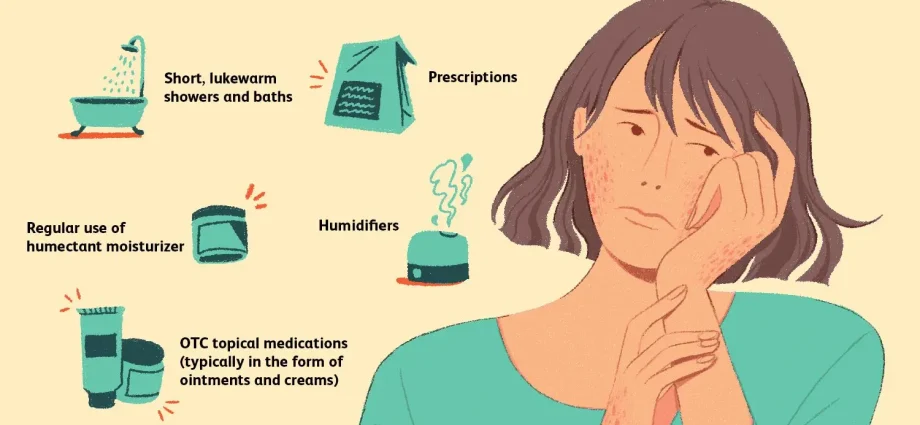Contents
According to world statistics, 10-20% of people suffer from atopic dermatitis – mostly children, but for many, the disease can continue into adulthood. We present the latest data on the causes of the disease and recommendations for the care of skin prone to atopy.
What is atopic dermatitis
Dermatitis is a skin disease, and “atopic” means “weird”, “inexplicable”. Indeed, science still does not fully understand why it develops.
Causes of the disease
However, scientists still managed to clarify something. For example, that dermatitis is inherited: if one of the parents had or has it, the child will also have the disease with a 50% probability. If both father and mother suffered (or suffer) from dermatitis, the probability of getting this diagnosis in children is 60-80%. The disease, the researchers say, develops due to an overreactive immune system. It can be provoked by:
allergic reaction to foods;
temperature drops;
stresses.
In 2013 year dermatologist Muriel Burain writes a scientific article in which he claims that balneotherapy (treatment with thermal water) can alleviate the symptoms of dermatitis. He gives two explanations for this.
Many minerals contained in thermal water are necessary for beneficial bacteria to exist. When these bacteria feel good and, therefore, multiply, they begin to evict staph from the skin.
Thermal water itself often contains bacteria, many of which have a beneficial effect on the skin. Interestingly, not only a living bacterium, but also its fragments (the so-called fractions) can have a beneficial effect.
Thermal water is good for any skin, and especially for skin prone to atopic dermatitis.
Atopic skin care
Careful and regular care is necessary for any skin. It is only important to consider its type and features.
Purification
humidification
After washing, skin prone to atopy must be moisturized. Try emollients – creams, milk, balms that restore its protective layer.
Use of decorative cosmetics
The use of make-up is not prohibited. But Alexander Prokofiev advises to test any decorative cosmetics first on a small area of skin – whether it will cause a negative reaction. Apply it, for example, to the inner surface of the wrist and observe for 30 minutes, and preferably throughout the day, to wait for a possible delayed reaction. Tonal and toning products are best chosen among products addressed to sensitive and very sensitive skin.
Salon procedures
Some procedures are compatible with the diagnosis of atopic dermatitis, but not all. “I’ll say right away: median peels and dermabrasion are contraindicated in atopic patients, since these manipulations destroy the already “leaky” protective layer of atopic skin,” says Alexander Prokofiev. – Superficial peels using lactic and glycolic acids can be done during remission. Injections of hyaluronic acid are allowed, but it is better to refrain from preparations with peptides and collagen.” Needless to say, in case of any unpleasant reactions, the procedure should be interrupted.
Atopic skin needs careful and regular care.
Overview of skin care products for atopic dermatitis
Thermal water La Roche-Posay
A must have for owners of any skin type: you can take it with you on the road and put it on your desktop next to your computer. Thermal water moisturizes and softens the skin, gives comfort.
Lipid-restoring cleansing cream-gel for face and body Lipikar Syndet AP +, La Roche-Posay
The product contains niacinamide, shea butter, and Aqua Posae Filiformis, a new patented ingredient that regulates the natural microflora of the skin, strengthens its protective barrier. The product cleanses, moisturizes and softens the skin. Reduces severe dryness after showering and washing.
Lipid-replenishing balm for face and body Lipikar Baume AP +, La Roche-Posay
Instantly softens and soothes the skin, reduces itching and dryness. Enriched with skin-friendly Aqua Posae Filiformis probiotic, niacinamide and shea butter.
Stick for the care of dry and atopic skin Lipikar AP +, La Roche-Posae
where to find?
It is convenient to use it anytime, anywhere, carry it with you in your purse. Thanks to madecassoside and shea butter, it instantly soothes the skin. And zinc gluconate contributes to its restoration. The stick can be used throughout the day as needed.










